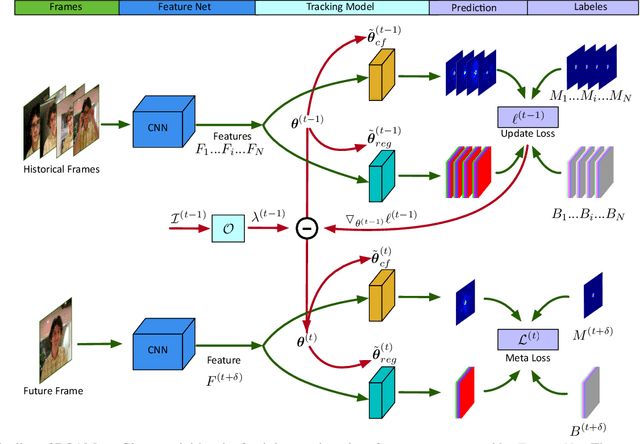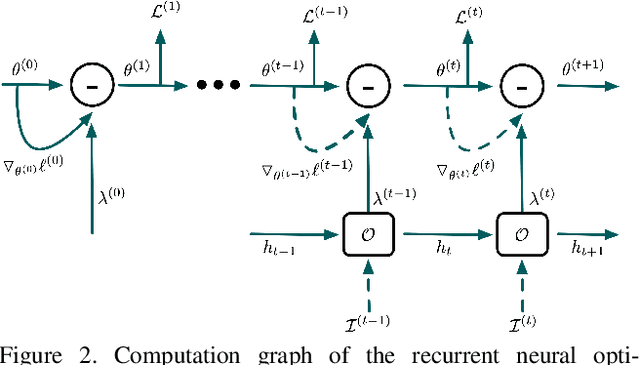ROAM: Recurrently Optimizing Tracking Model
Paper and Code
Jul 31, 2019



In this paper, we design a tracking model consisting of response generation and bounding box regression, where the first component produces a heat map to indicate the presence of the object at different positions and the second part regresses the relative bounding box shifts to anchors mounted on sliding-window locations. Thanks to the resizable convolutional filters used in both components to adapt to the shape changes of objects, our tracking model does not need to enumerate different sized anchors, thus saving model parameters. To effectively adapt the model to appearance variations, we propose to offline train a recurrent neural optimizer to update tracking model in a meta-learning setting, which can converge the model in a few gradient steps. This improves the convergence speed of updating the tracking model while achieving better performance. Moreover, we also propose a simple yet effective training trick called Random Filter Scaling to prevent overfitting, which boosts the generalization performance greatly. Finally, we extensively evaluate our trackers, ROAM and ROAM++, on the OTB, VOT, LaSOT, GOT-10K and TrackingNet benchmark and our methods perform favorably against state-of-the-art algorithms.
 Add to Chrome
Add to Chrome Add to Firefox
Add to Firefox Add to Edge
Add to Edge